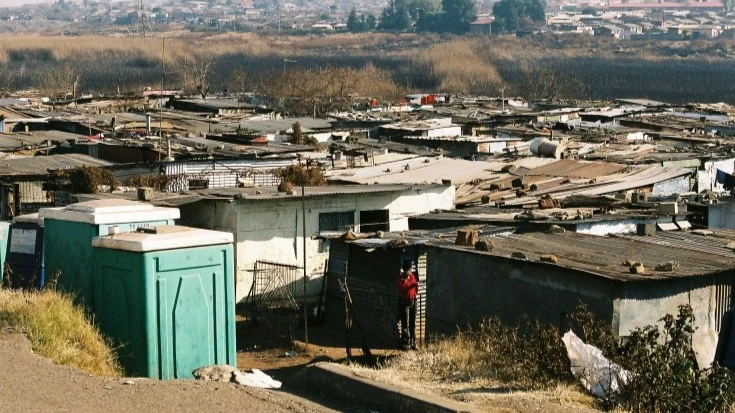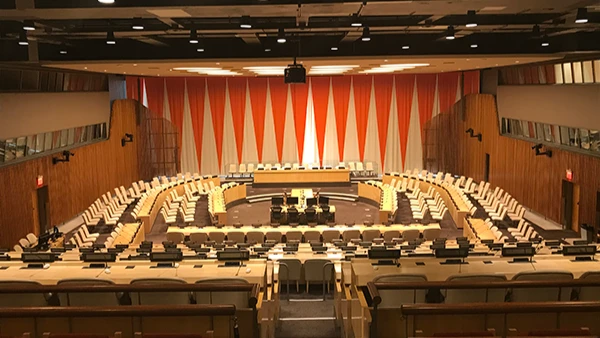UN: Debt repayment shouldn’t jeopardise basic social services

MANY developing countries are overburdened by the vicious spiral of public debt due to, among other things, a high incidence of poverty, borrowing mentality, the mismanagement of public resources and debt servicing conditions. In 2023 public debt, comprising domestic and external general government debt, reached $97 trillion, a $5.6-trillion increase from 2022, according to UNCTAD world of debt report 2024.
“Over three-quarters of this debt are owed by countries in Asia and Oceania, while Latin America and the Caribbean account for 17 per cent and Africa for just 7 per cent.” Africa’s share of countries with debt-to-GDP ratios above 60 per cent has increased from 25-46 per cent between 2013 and 2023.
As a result, resources that are supposed to be spent on development and social services are spent on debt servicing, thus depriving citizens of development and basic needs. “During 2020-2022, there were 15 countries whose interest payments exceeded education expenditure, and 46 countries where they were higher than health expenditure,” says UNCTAD.
UNCTAD recommends a roadmap to fast-track sustainable development in the sustainable development goal (SDG) stimulus package, focusing on three key areas, namely addressing the high cost of debt and rising risks of debt distress (improving the real and effective participation of developing countries in the governance of the international financial architecture), massively scaling up affordable long-term financing for development, and expanding contingency financing for needy countries.
“Developing countries must not be forced to choose between servicing their debt and serving their people. The international financial architecture must change to ensure a prosperous future for both people and the planet. A reform is not only necessary, it is urgent.”
Citing World Bank (2021), Economic Commission for Africa (ECA) report (20230 titled “ Debt and Finance Profiles: Africa” says external debt comprises public and publicly guaranteed long-term debt, private non-guaranteed long-term debt, short-term external liabilities and government use of the trust fund, special facilities and special drawing rights of IMF.
As of September 30, 2022, a total of 9 countries were in debt distress (when a country fails to fulfil its debt obligations), 28 countries were at high risk, 25 countries were at moderate risk (including Tanzania), and 7 countries were at low risk of debt distress. In Africa, 8 countries were in debt distress, namely Chad, the Republic of Congo, Mozambique, São Tomé and Príncipe, Somalia, Sudan, Zambia and Zimbabwe.
According to UNCTAD, in 2023 high public borrowing to meet necessary public spending demand was accompanied by rising levels of public debt, increasing debt repayment burden in particular in the context of rising interest rates, which aggravated the vulnerabilities and risks of debt distress.
“Similarly, concerns related to debt data transparency in a number of countries remained very high. It is widely recognised that in such circumstances, the effective management of public resources and liabilities, including public debt, is a necessity.”
In Tanzania, as of the end of June 2023, according to data from the Ministry of Finance, the national debt stock comprising public domestic and external debt, and private sector external debt, stood at $42,681.0 million (53.4 per cent of GDP), compared to $38,265.63 million recorded in June 2022. Out of this, domestic debt was $12,428.3 million, equivalent to 15.6 per cent of GDP, and external debt (including public and private) was $30,252.7 million, equivalent to 37.9 per cent of GDP.
Public debt stock stood at $35,255.8 million (44.1 per cent of GDP) at the end of June 2023 from $30,891.6 million (42.8 per cent of GDP) recorded in June 2022, equivalent to an increase of 14.1 per cent. Out of the public debt, external debt accounted for 64.7 per cent, while domestic debt accounted for 35.3 per cent.
The stock of external debt (comprising public and private sector) was $30,252.7 million at the end of June 2023, equivalent to an increase of 8.7 per cent from $27,832.5 million recorded in June 2022. Out of that, external public debt was $22,827.51 million and private sector debt was $7,425.2 million.
As of June 7, 2024, Tanzania’s debt sustainability analysis prepared by International Monetary Fund (IMF) and International Development Association (IDA) on Tanzania’s Debt Sustainability Analysis (DSA) indicated that its risk of external debt distress remains moderate. “Tanzania has some space to absorb shocks and risks are tilted to the downside. All external debt burden indicators continue to stay below the policy-determined thresholds under the baseline scenario. The public DSA analysis indicates that the present value of the public debt-to-GDP ratio remains contained at about 35 per cent, well below the 55 per cent benchmark based on Tanzania’s debt carrying capacity.”
According to this report, the DSA results signal the importance of accessing, to the extent possible, external financing on concessional terms. “To maintain current fiscal and debt sustainability, in line with the IMF Extended Credit Facility (ECF) objectives, the authorities should improve revenue mobilisation and public investment management, including selecting only investment projects with clear socioeconomic payoffs. Building resilience to climate change is also important to preserve debt sustainability amidst climate change effects.”
Top Headlines
© 2024 IPPMEDIA.COM. ALL RIGHTS RESERVED

























